An international line up of artistsQuestion whether its decorative arts or fine arts and does it matter? Are they raising questions regarding political, or social views or creating art for arts sake and pushing the boundaries of technique and artist descriptions?Below are some of the pieces that really stood out for me at the exhibition. I was pressed for time and but was fortunate enough to speak to a couple of the artist that were in the space.
Sara Ouhaddou - France - R3 - 2017, natural ceramic enamelled, dimensions variable.
Above is an image of Sara Ouhaddou's ceramic tiles, the spaces had a variation of these in different coloured glazes. These unglazed installation stood out for me, the lack of colour focused the viewer on to the patterns and the fragmentation, which I am always drawn to in artwork. It felt like a jigsaw I was itching to put together, I am actually tempted to print this image out and reorganise it to find a repeat as I don't think there is one, so it alludes to a broken pattern but actually one doesn't exist.

Timo Nasseri - Germany - Epistrophe #8, 2017, stainless steel and styrofoam, 217 x 217 x 80 cm.
This piece blew my mind. I had seen it on social media, photos from friends etc and of course been to his solo show at Maraya Art Centre a few days before. I did not realise that the piece was actually concave! It recesses in to the wall 80cm meaning that for installation a false wall has to be installed to hold the piece and bring the illusion to life. Due to the nature of the material it is almost impossible to photograph an capture the recess.
Zeinab Alhashemi - UAE - Metalmorphosis, 2017, steel, mirror, 200 x 200 cm
Alhashemi is a local designer, it's always wonderful to see local artist and designers being included in diverse international shows. The material is familiar if you are living in the UAE as its a common building material that is often discarded in piles around construction sites, it was intriguing to see it in a familiar placement but have it exposed by its reflection as a islamic pattern design. distorting our perception of what we assume we are seeing.

Toy Studio - UK - In Bloom, 2017, aluminium, 200 x 200 x 200 cm
This piece, In Bloom, created excited shadows and light casts around the space. The byproducts of the artwork were more inspiring that the form itself to me as a viewer. I wanted to trace them, and capture their forms on the surrounding blank walls.




Elisa Strozyk - Germany - Wooden Textile: Transparent Maple, Transforming Red Reflecting Black, 2017, wood and textile, 350 x 120 cm
The wooden textiles pictured above were both beautiful to look at and frustrating to be around as I desired to play with them, folding the forms and experiment with the shapes and formations they promised to create. I also took the opportunity of the secluded exhibition space to move around the back of the pieces and experience the light shining through the textiles. It occurred to me that this is definitely an important factor to me, something I also use in my own work so need to make this more of a feature or thinking point.

Natalie Fisher (Artweave Originals) - Australia - Hassan, wool on needlepoint canvas; Fes Cool, wool on needlepoint canvas
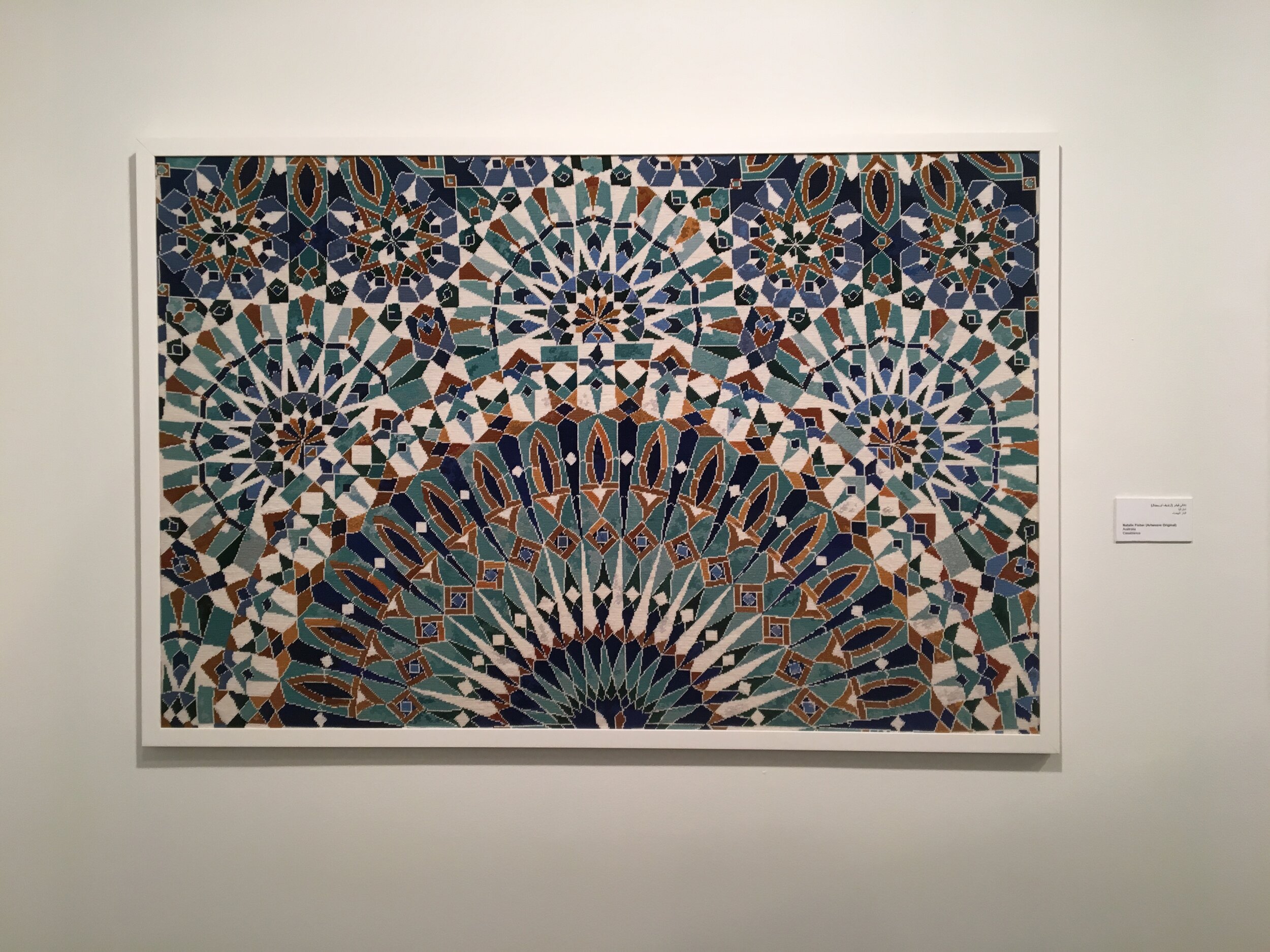
Natalie Fisher (Artweave Originals) - Australia - Casablanca, 2015, wool on needlepoint canvas, 950 x 1500 cm

Natalie Fisher (Artweave Originals) - Australia - wool on needlepoint canvas; roving on wire frame.
Natalie Fisher was jumping on to one of her pieces as I turned in to her exhibition space, it was a geometric design made from needlepoint floor cushions, her camera was set up on a tripod with the timer ticking down. We chatted for ages, she was an absolute delight. We discussed process, time and the fact that 10yrs+ of work was hanging on the wall due to the labour intensive nature of embroidery and needlepoint, and how the art scene worked in the UAE. It was her first visit to the region so I gave her some tips on what to see. The half cross-stitch works were expansive, intricate and absorbing, you could capture the mediative aspect of creating simply by viewing the work. I ask the question of my work, and how I can be as dense in practice as these needlepoint pieces but remain transparent?


Leonardo Ulian - Italy - Technological Mandalas, 2017, mixed media, 280 x 700 x 500 cm
Ulian's installation again bought up the question of transparency, intricacy and sensuality. I wanted to 'ping' the taut wires, brush the diodes with my fingers but at the same time protect its delicacy. Literally fusing technology with ancient geometrics.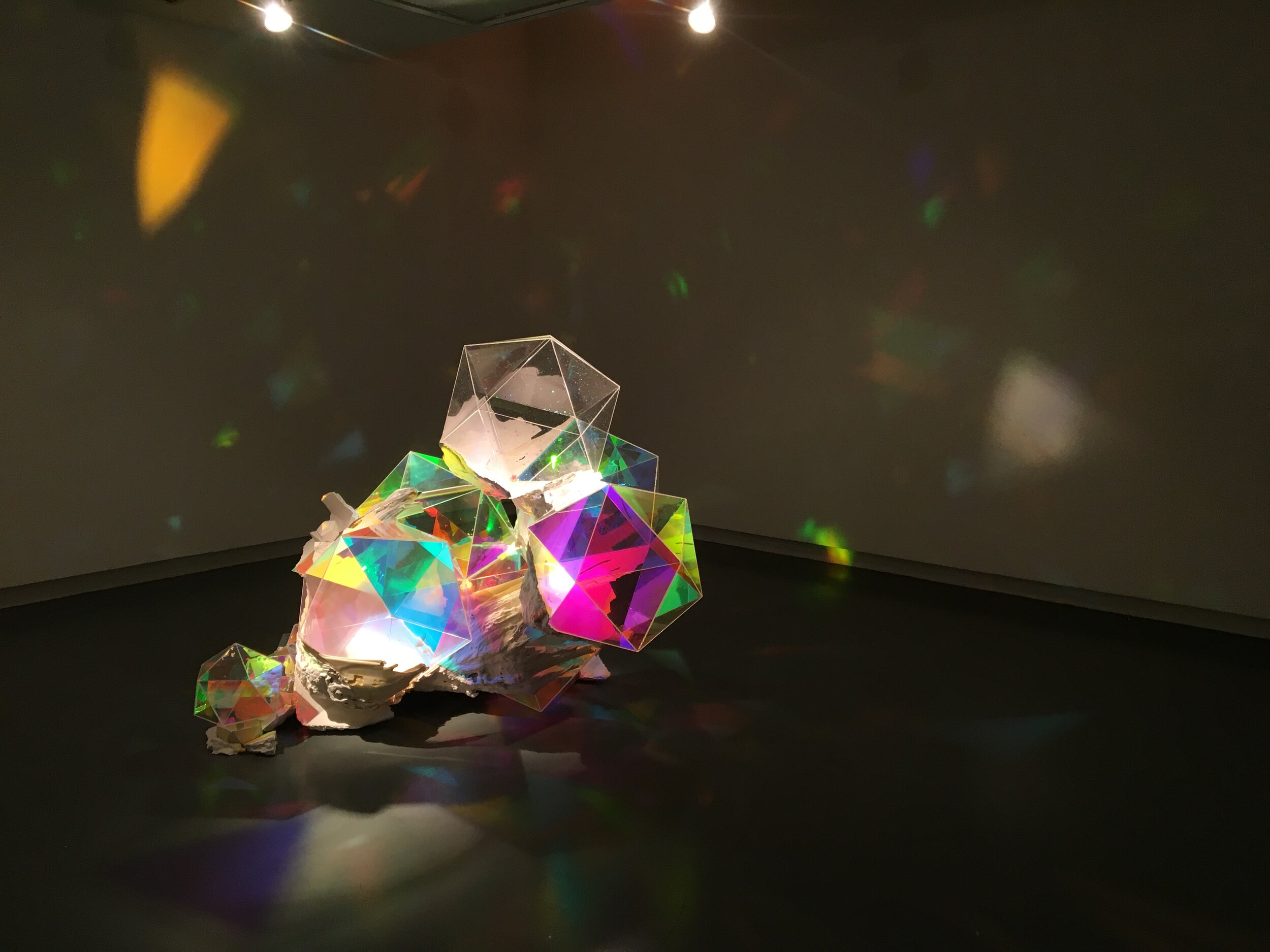
John Foster - USA - Truth Ore, 2017, dichro-acrylic, gypsum cement, gold leaf pigment, 90 x 157 x 81 cm
I've seen John Foster's work before; I've been lusting after a furniture piece he created, a table that emerges from these iridescent forms. The allude to the capturing of bubbles, that moment of sparkling wonder until 'pop' it disappears, only with Foster's works they remain in their luminescent glory.
Ben Johnson - UK - The Facade, Sala de la Barca, 2015, acrylic on canvas, 153 x 191 cm (detail)

Ben Johnson - UK - Dome of the Rock, Niche I, 2016, acrylic on polyester linen, 200 x 154 cm; Dome of the Rock, Facade, 2017, acrylic on polyester linen, 220 x 220 cm; Dome of the Rock, Niche II, 2016, acrylic on polyester linen, 200 x 154 cm.
Johnson's work was spell binding, the accuracy and technical craftsmanship in these paintings is a sight to behold. I initially thought, as most audience members do, that they were enlarge photographs of architectural facades, but no, they are photorealistic paintings completed by Johnson. I'm not sure on as to what they bring to the table, copying craftsmanship on to canvas, other than to show of Johnson's technical ability. Perhaps the viewer should be questioning the original crafts people, the ones who created the tile formations, the patterns that Johnson so loving recreates?
Matthew Shlian - USA - RLLR, 2017, paper, 26" x 26" x 1", RLRR, 2017, paper, 26" x 26 " x 1"; Ara 301, 2017, paper, 26" x 26" x 1"

Matthew Shlian - USA - Ara 150, 2015, paper, 26" x 40" x 2"
What Shlian can do with paper is a feat of engineering, again I was familiar with his works before encountering them in the gallery space, they are beautiful, especially Ara 150, a geometric grid structure created from cut paper. By creating these geometries in 3D paper sculptures Shlian changes the way light interacts with the patterns and moves the patterns in to tangible spaces from their usual flat perspectives.
Romina Khanom - UK - Untitled, 2017, laser cut rugs, dimensions variable.
Pattens: layered, cut, fragmented and hung, to be experienced from different angles as you move through the space. Traditional Persian rugs with the atypical floral motifs sliced through with the harsh, clinical geometries from islamic architectural features. It would not be unusual for these two features to be in the same place but not so inter-related as this. Is the rug still functional as a rug after being cut? Does it now have another function? window dressing? screen/divider, art piece?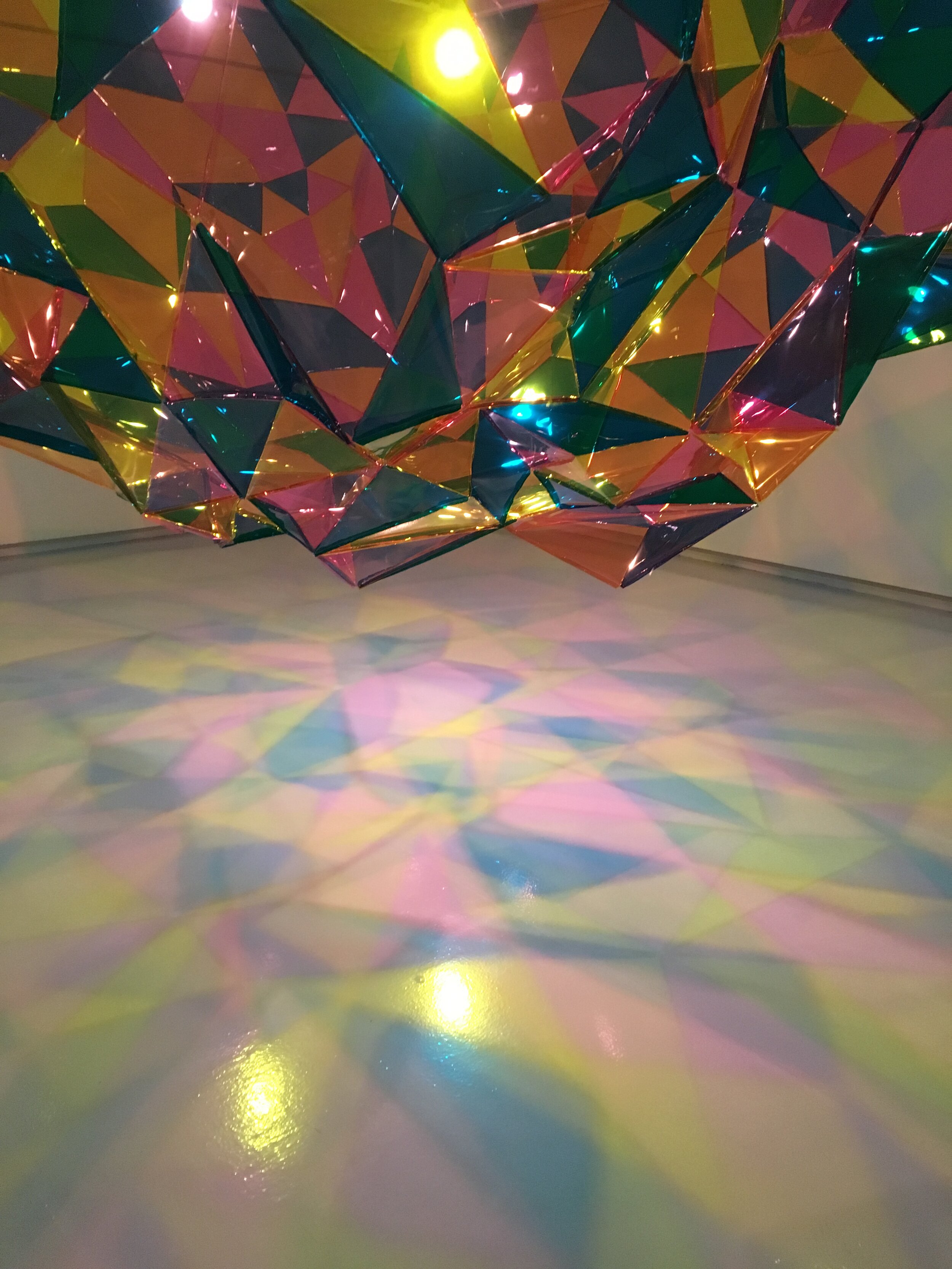
Gabby O'Connor - Australia - All the Colours, All the Light, 2017, steel and plexiglass, dimensions variable.
Gabby O'Connor is an artist/researcher, working with scientists in the Antarctic. Why she was included in the Islamic Art Festival I do not know. Thats not to say her work wasn't beautiful or captivating to it's audience but the simple use of geometric shapes, in my opinion, dos not preclude automatic inclusion, this troubled me. I am grateful that she was included as I think her research in the Antarctic is fascinating and her light pieces are very inspiring to me as someone obsessed with pattern and transparency.
Hitoshi Kuriyama - Japan - 0=1 - Reflections, 2017, mirrored glass, fluorescent light, 240 x 240 x 260 cm.
Kuriyama is inspired by infinity.. and apparently the arabesque patterns in the domes of mosques, however I find no other record of this islamic connection in any writing on his work or the artists own website. Does that mean it was manipulated for inclusion? Does that matter? I'm not sure how the artists were selected for the exhibition, whether it was open call or invite but I do question what artists working with Islamic inspired art pieces were overlooked.










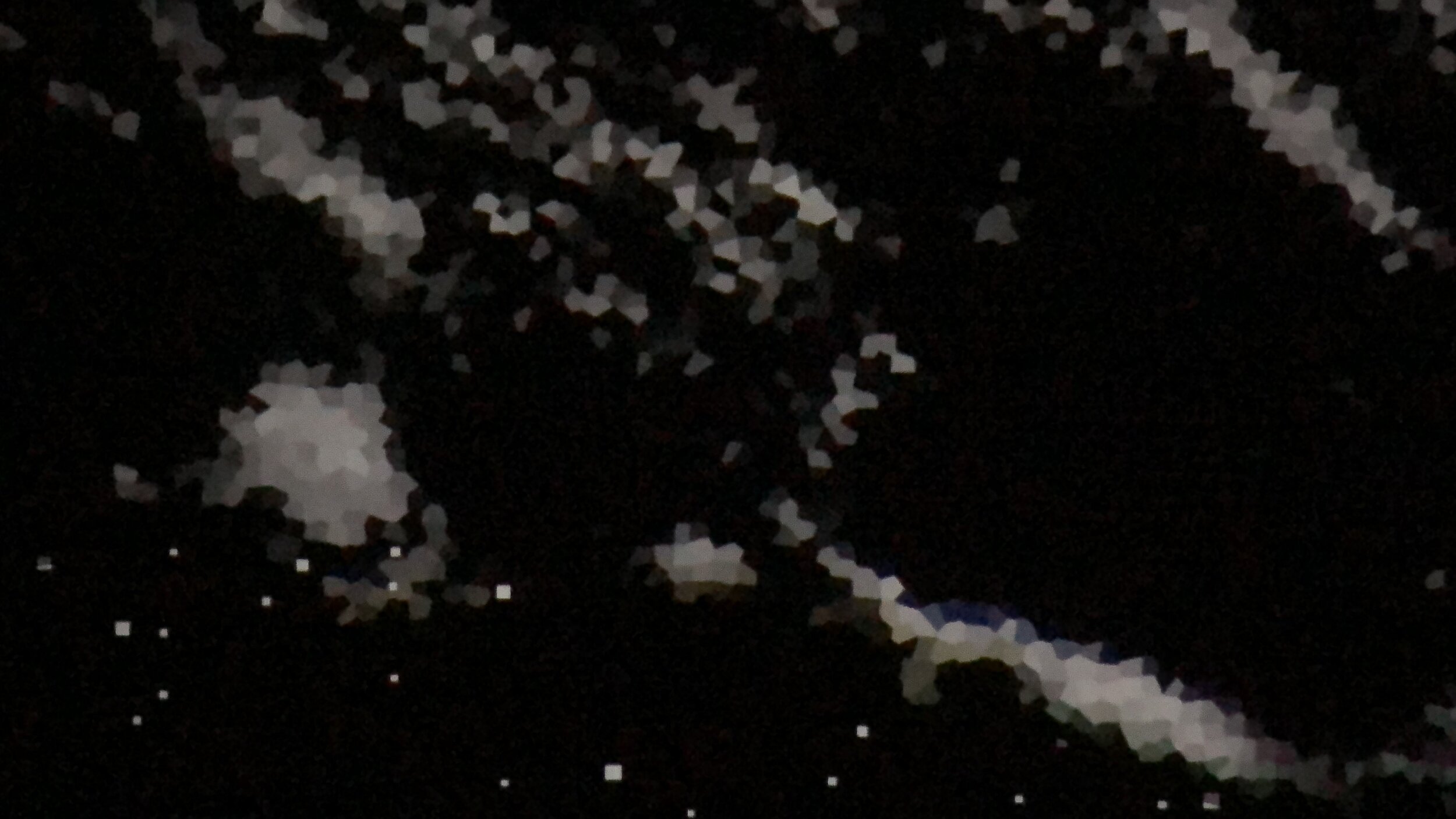





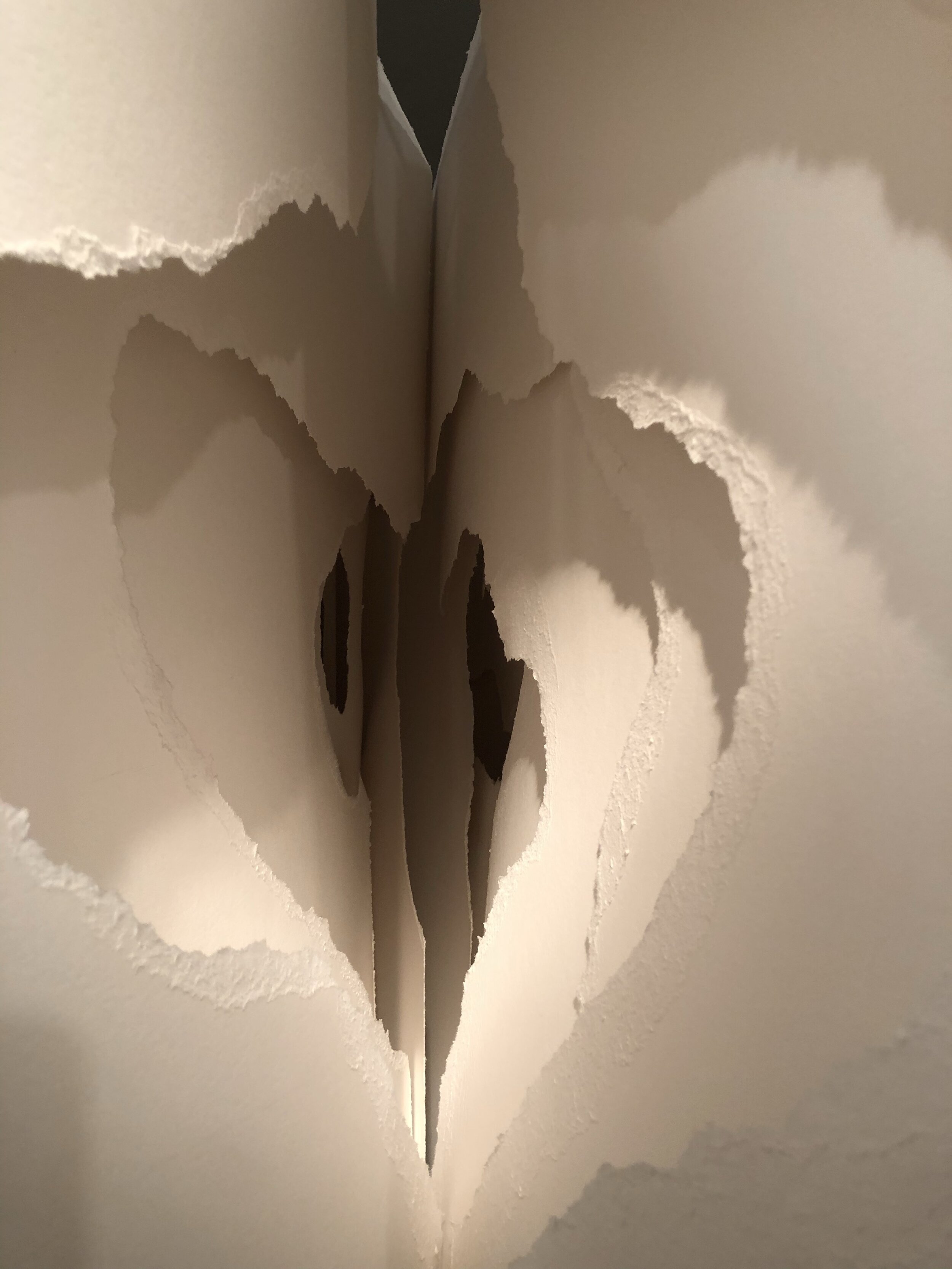











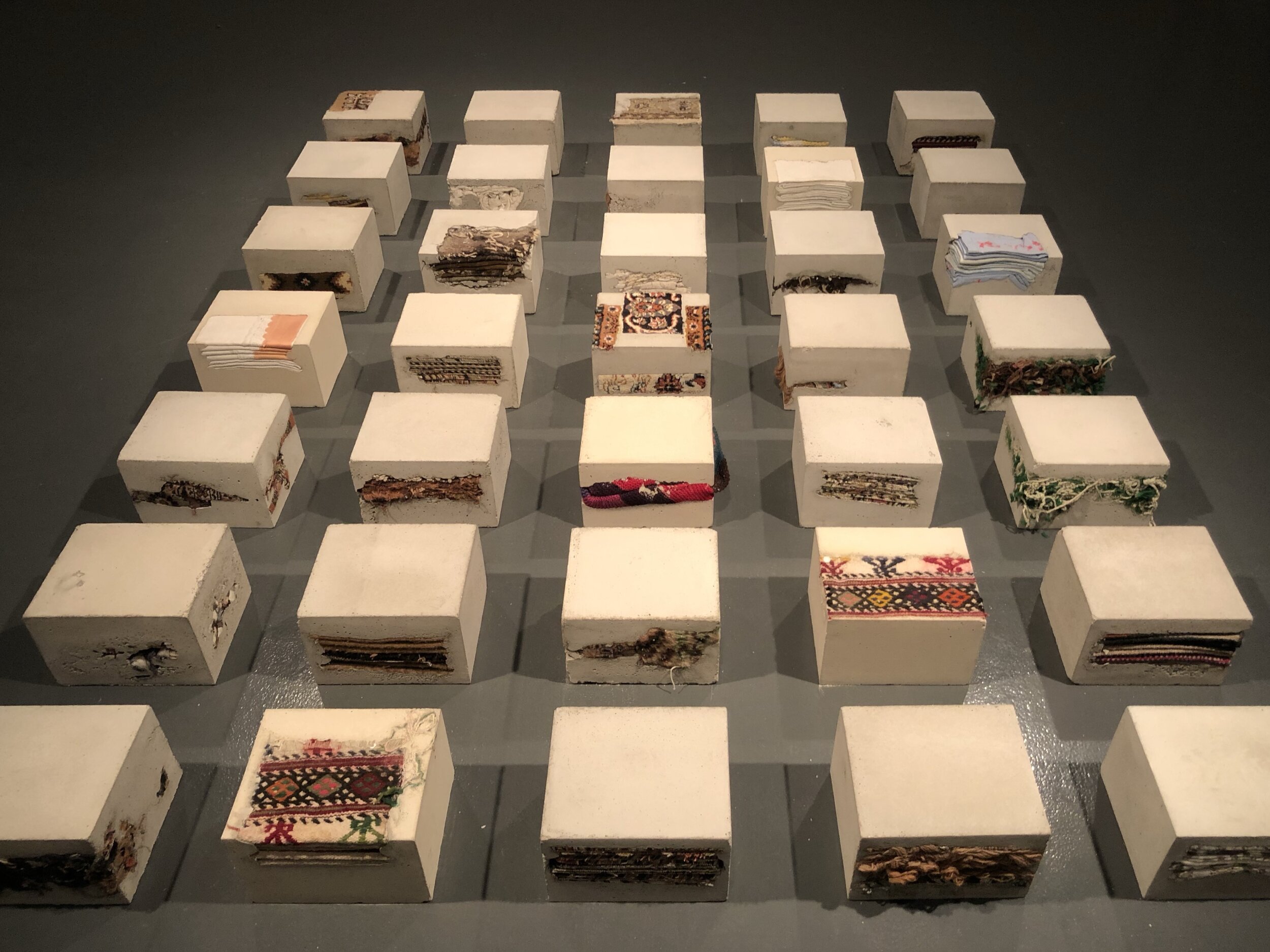


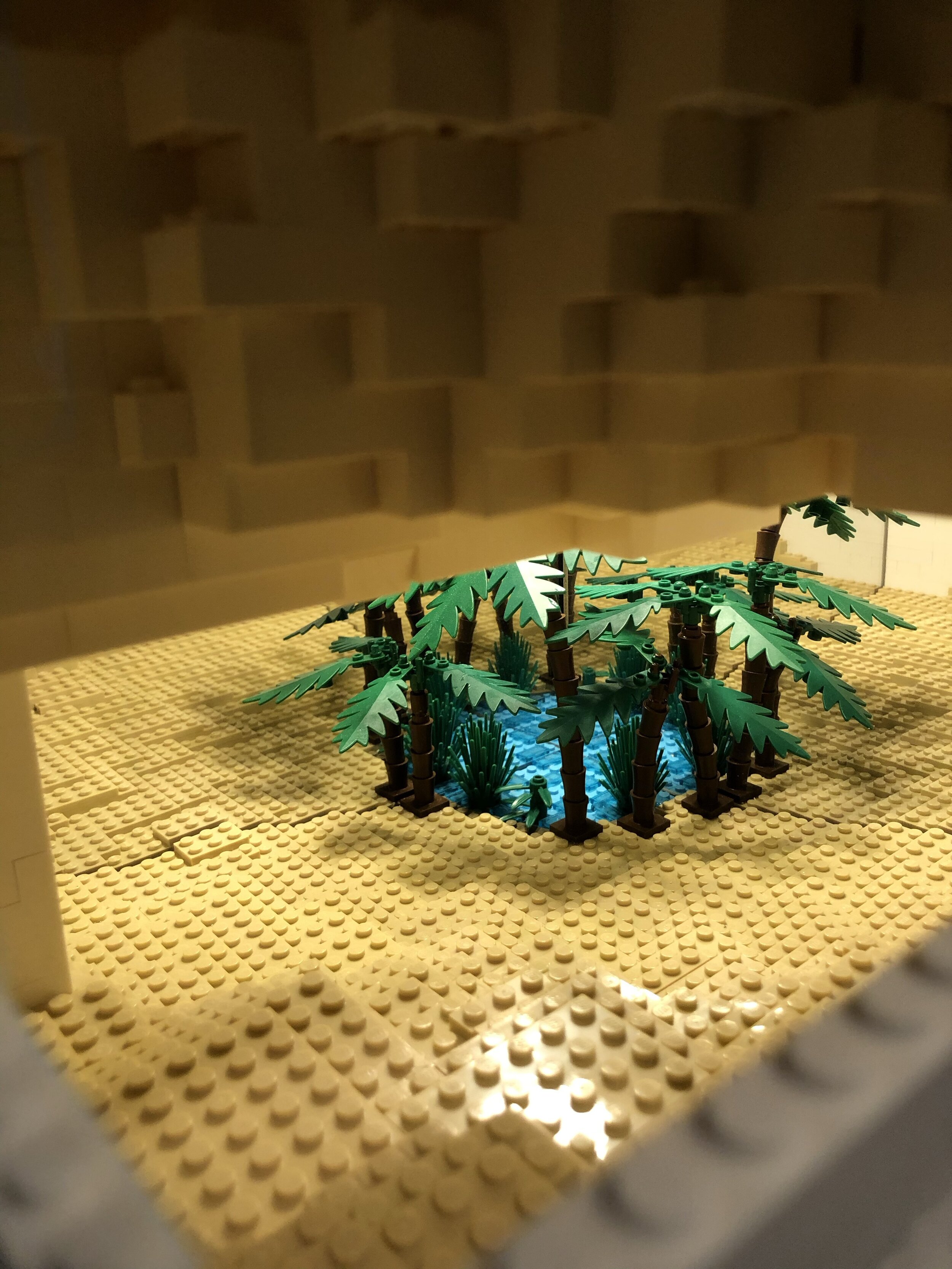






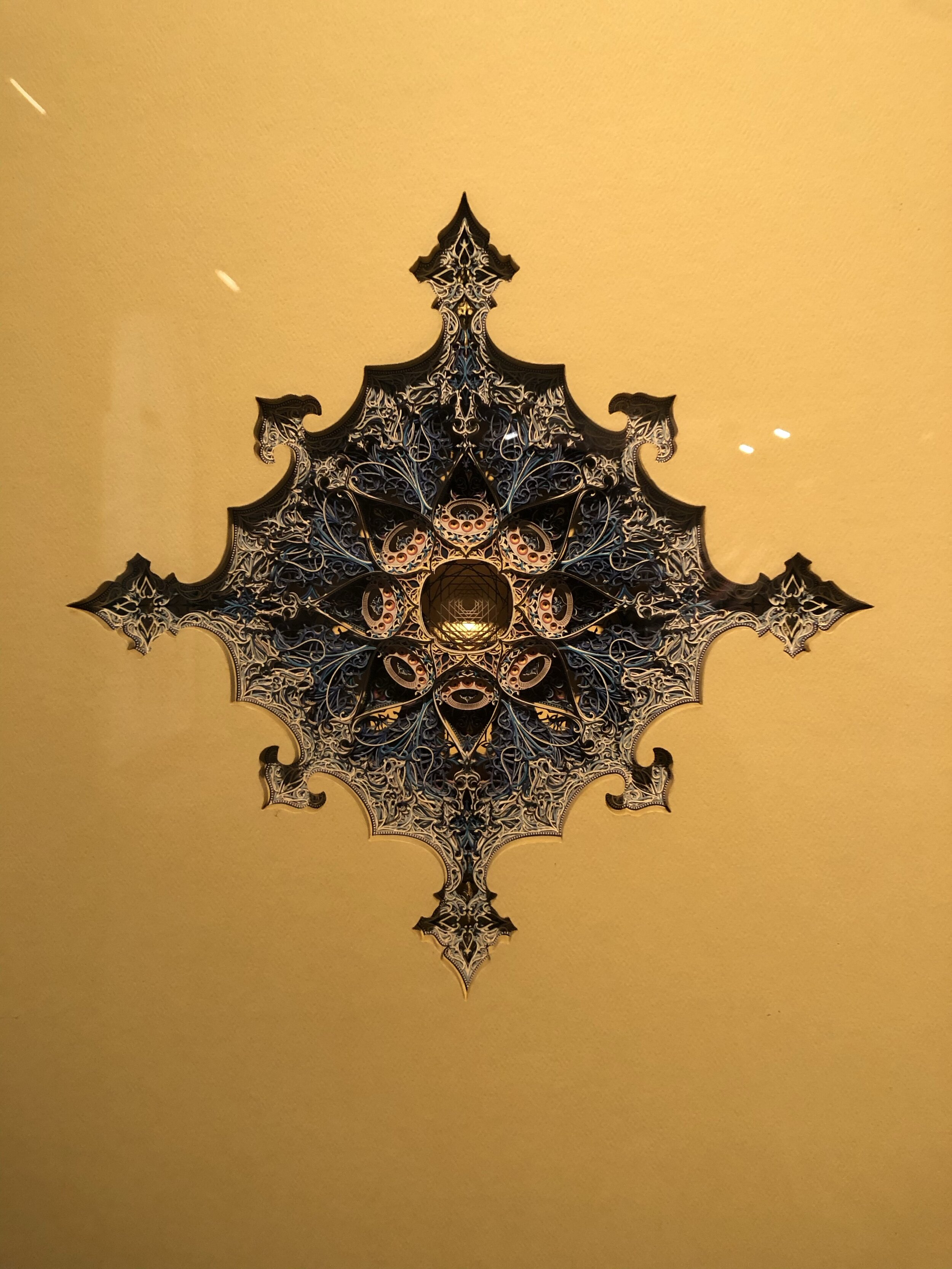





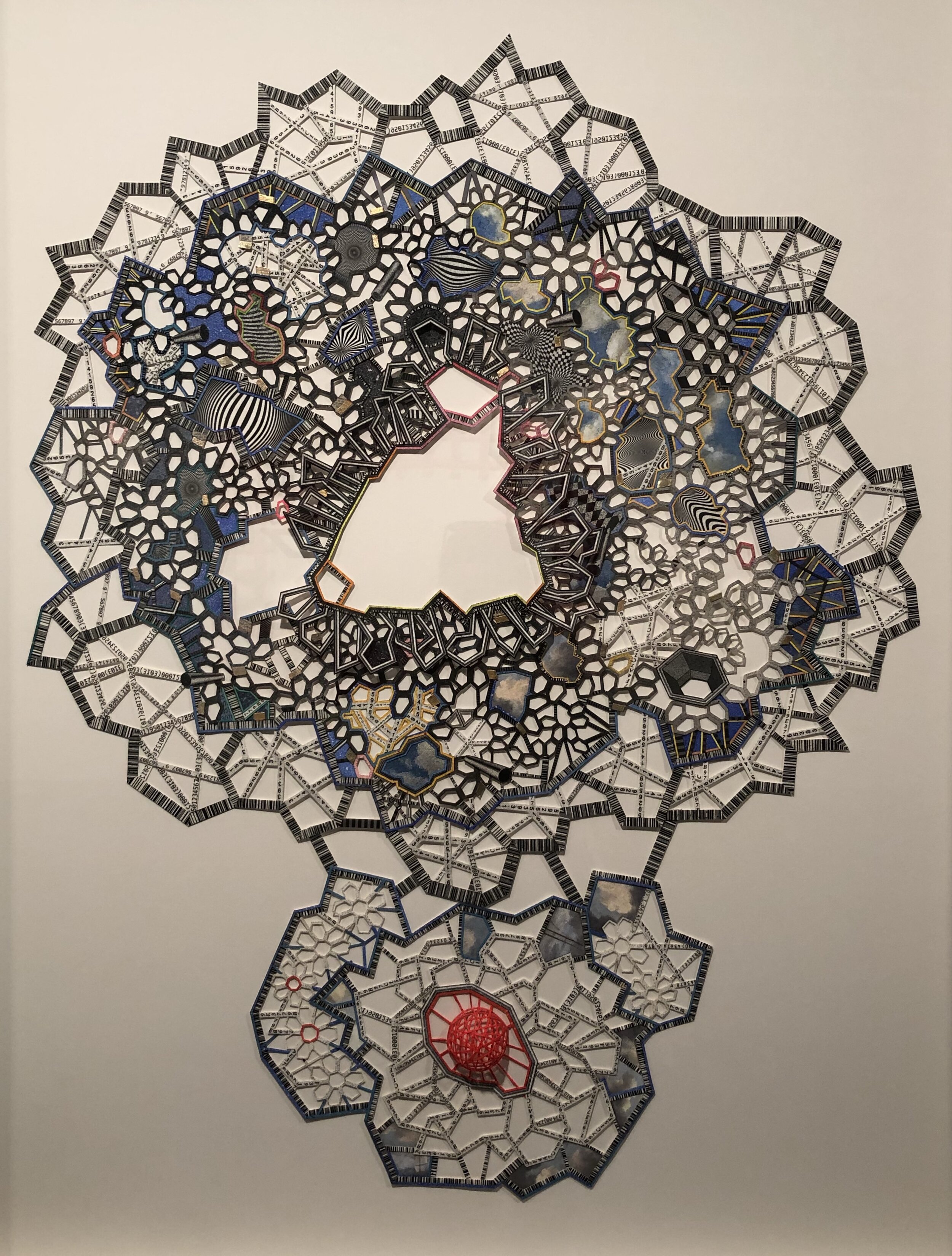
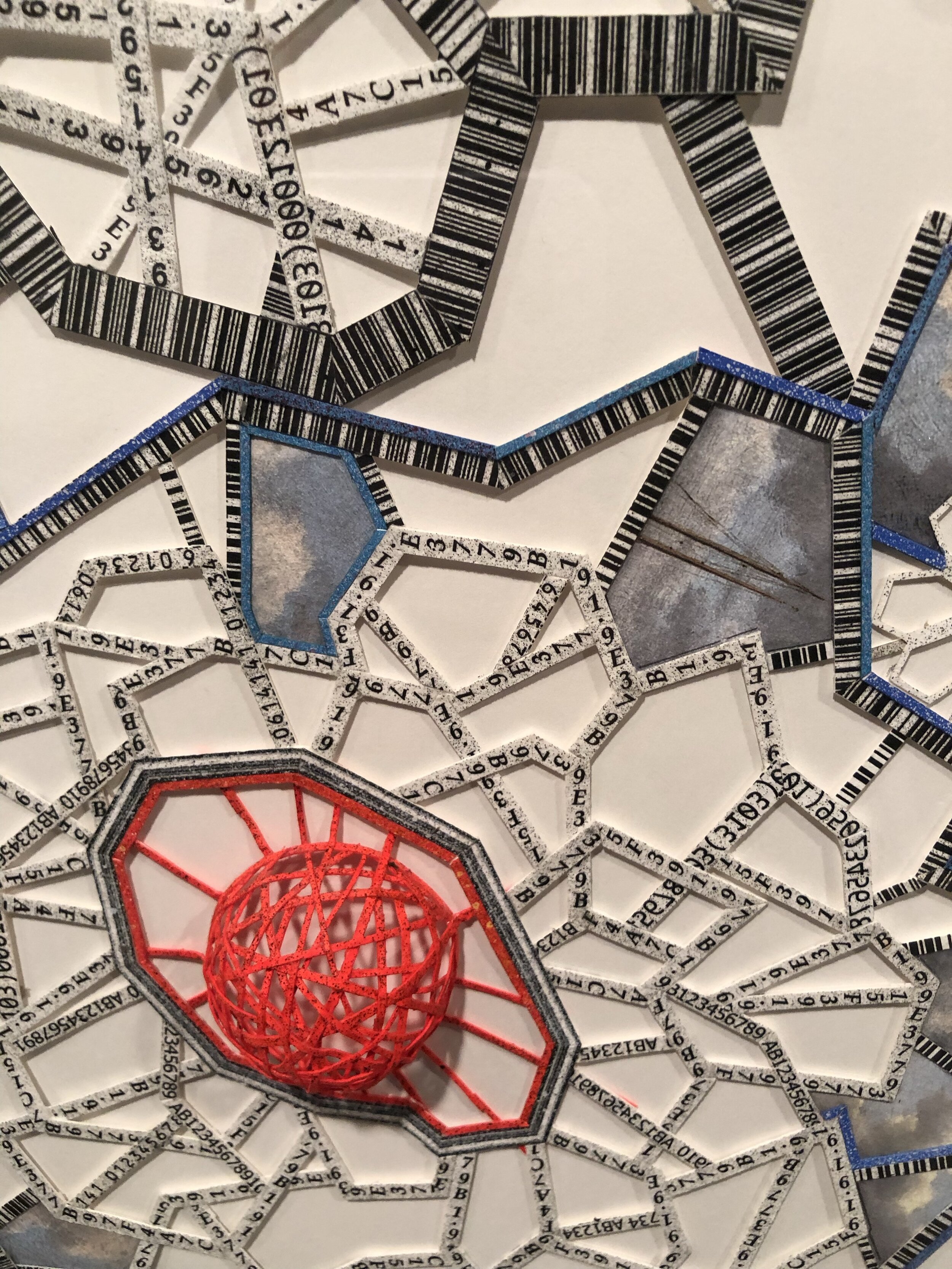





















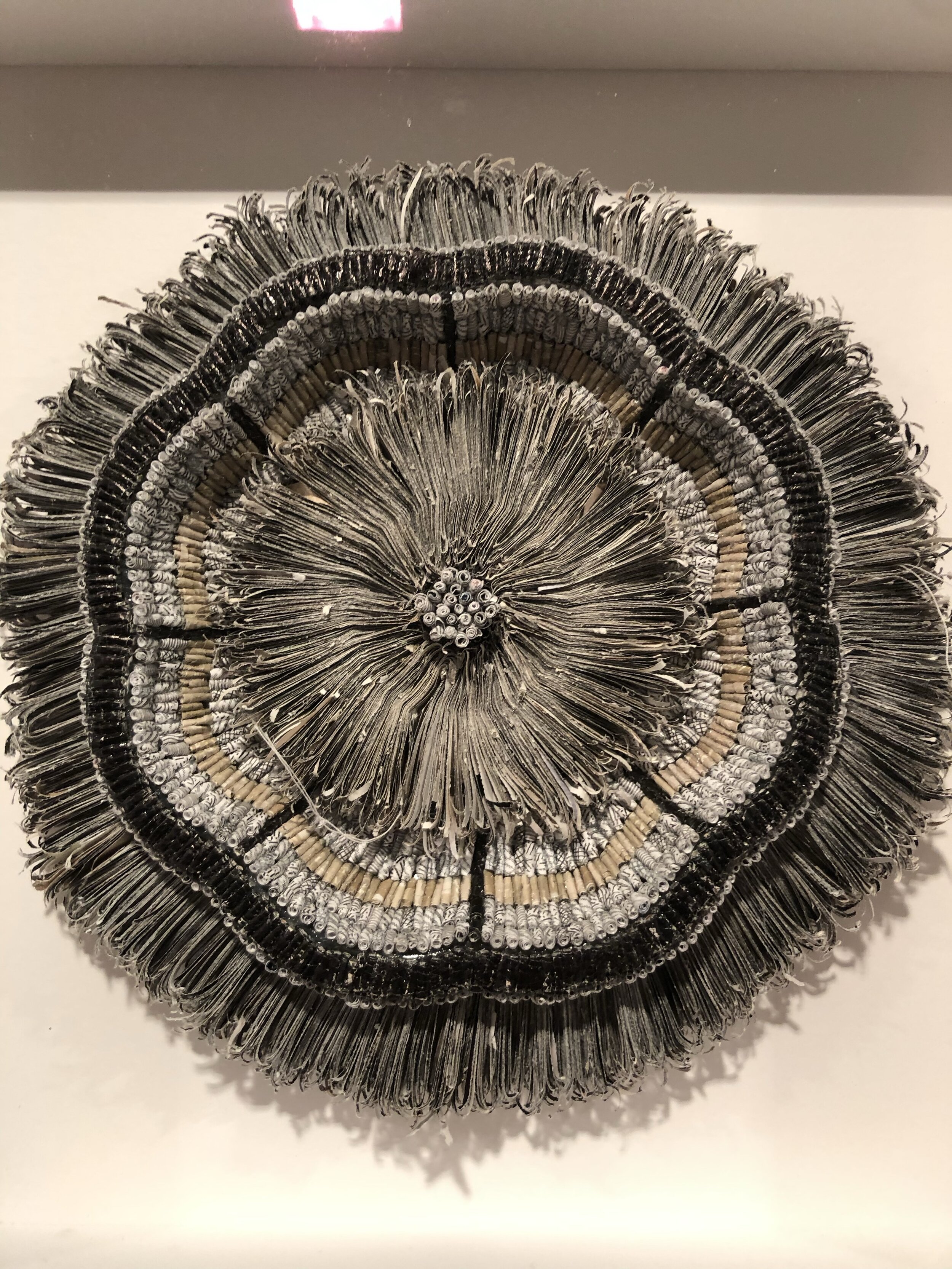




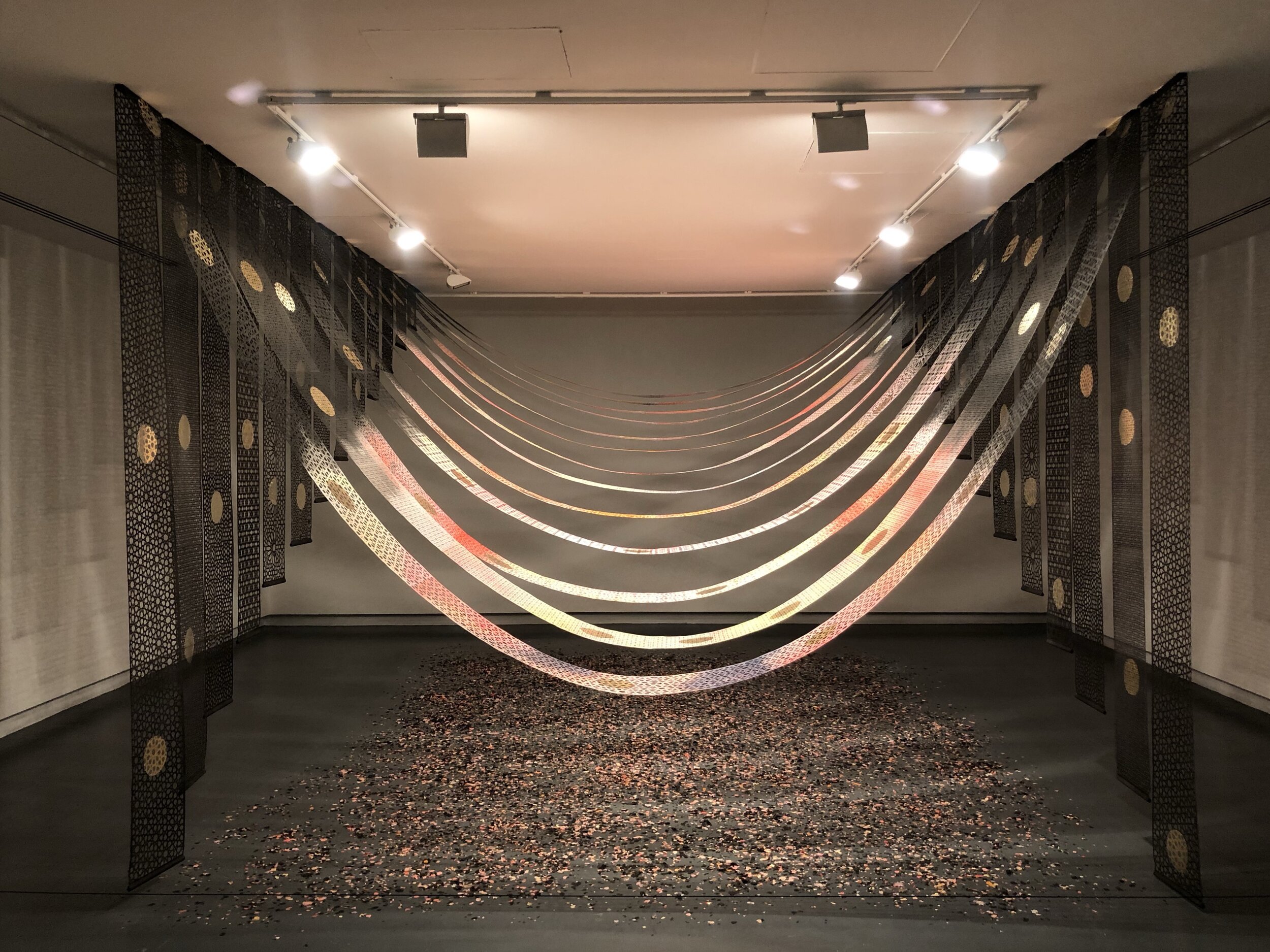





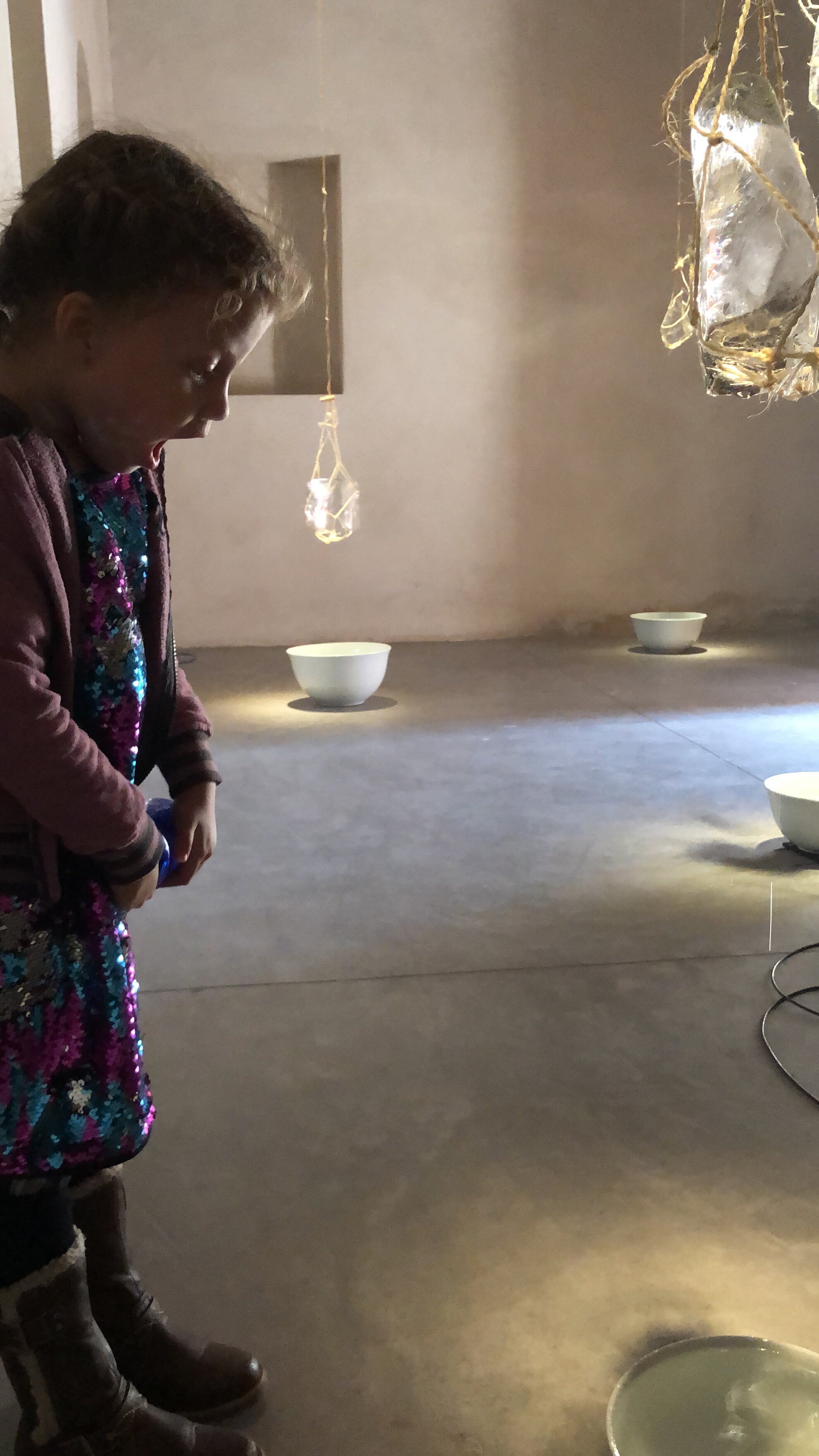











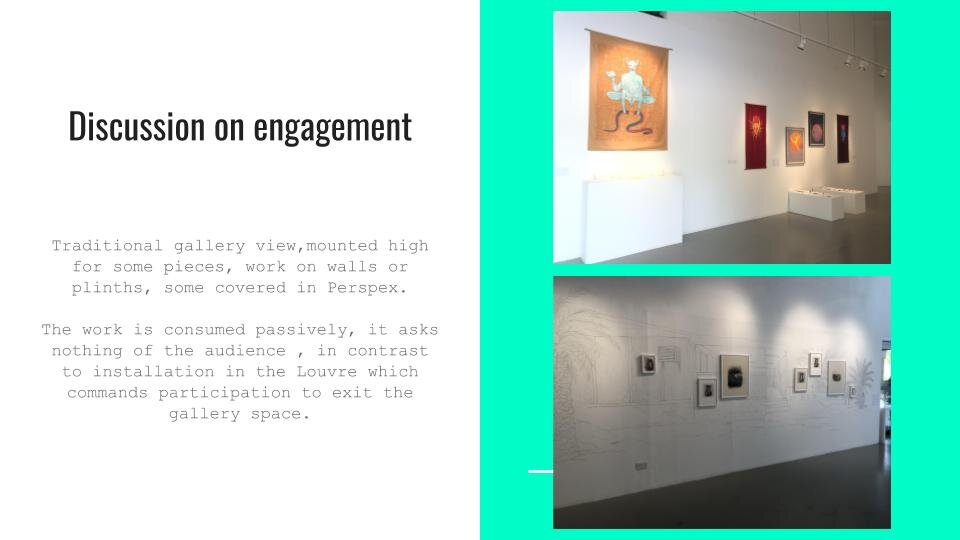


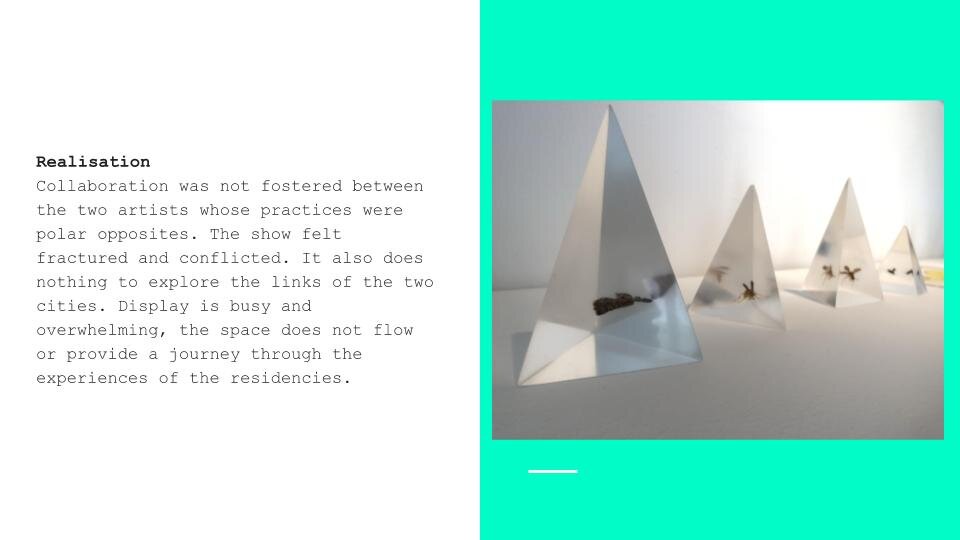









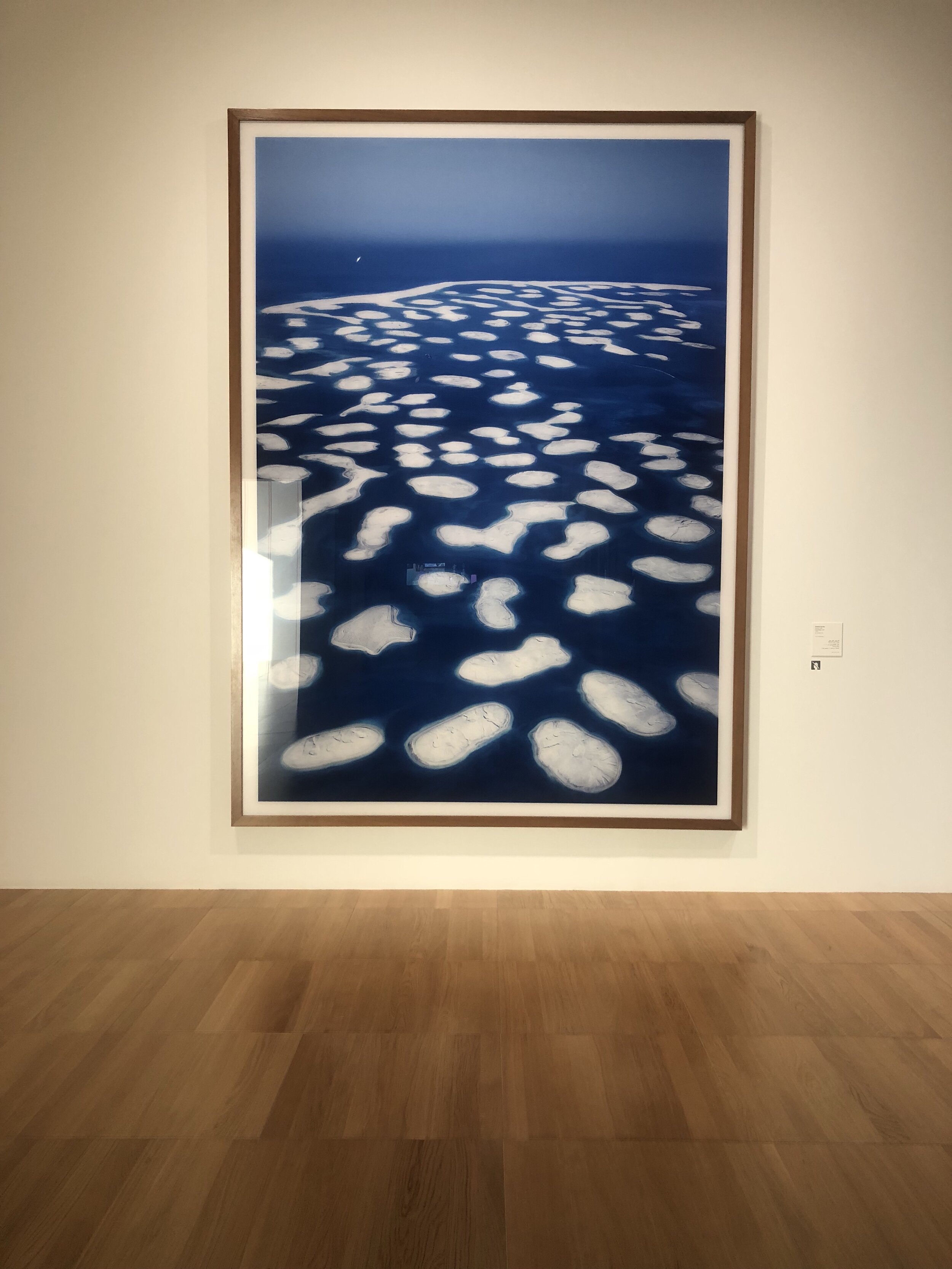
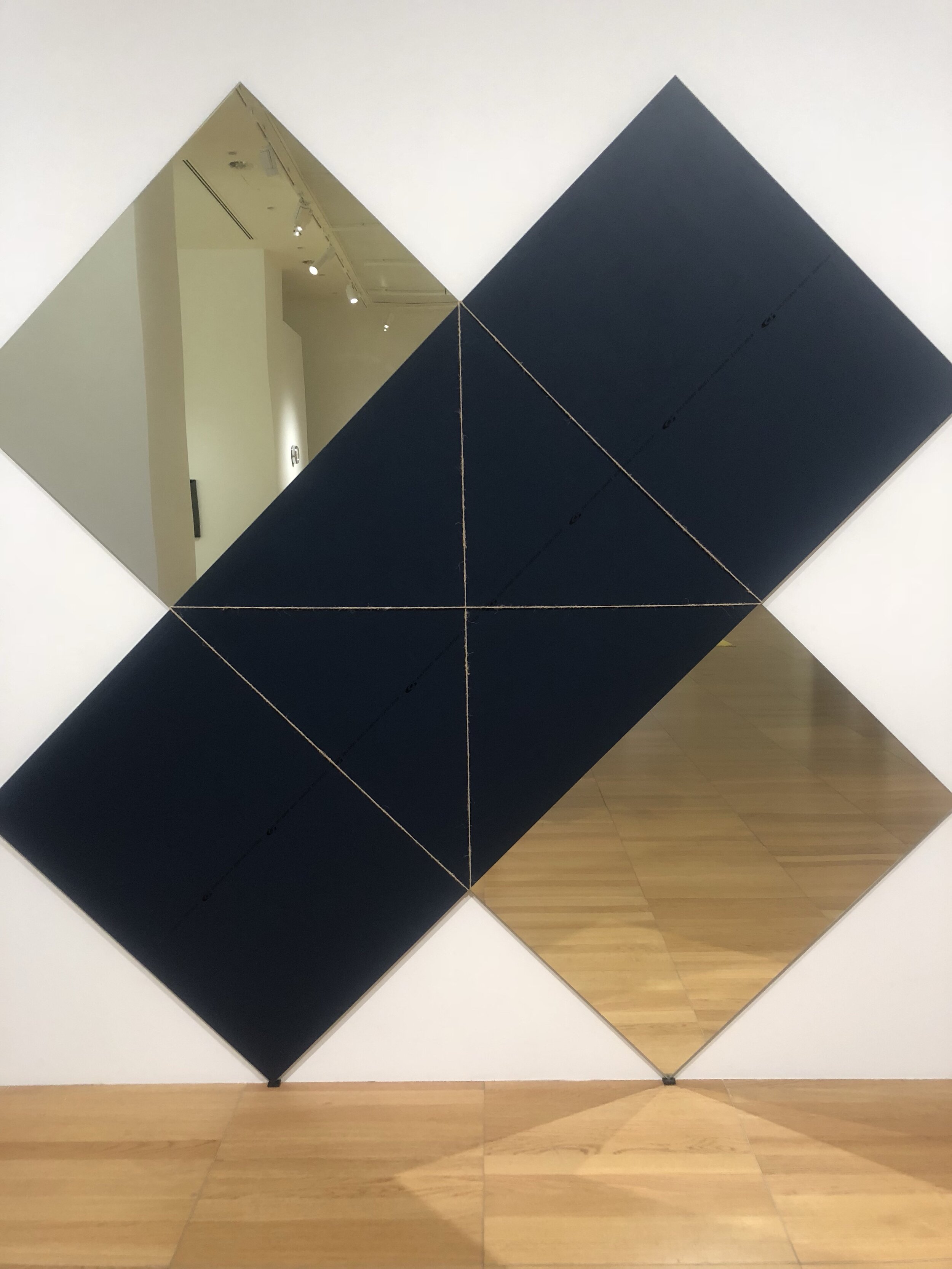



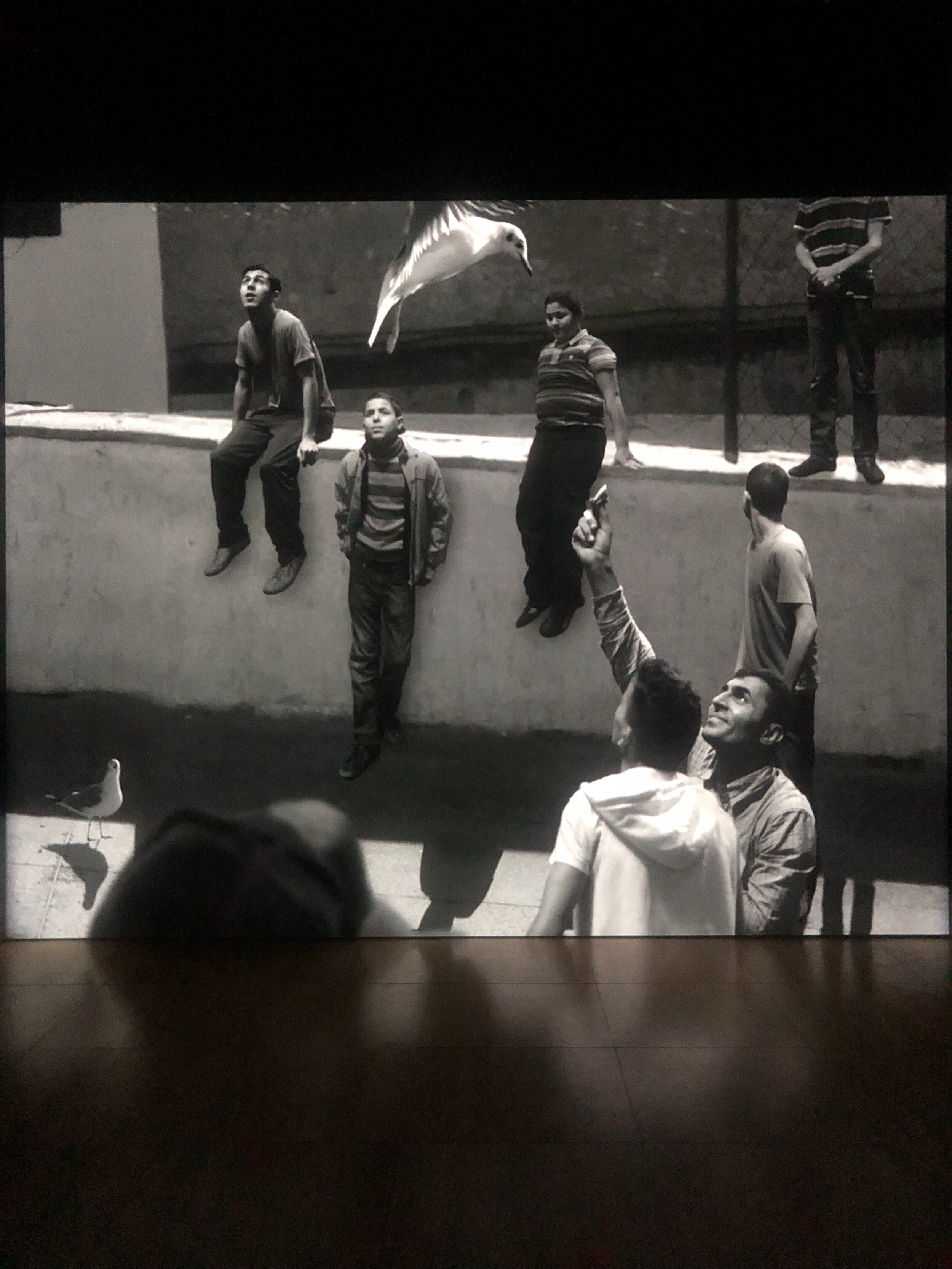


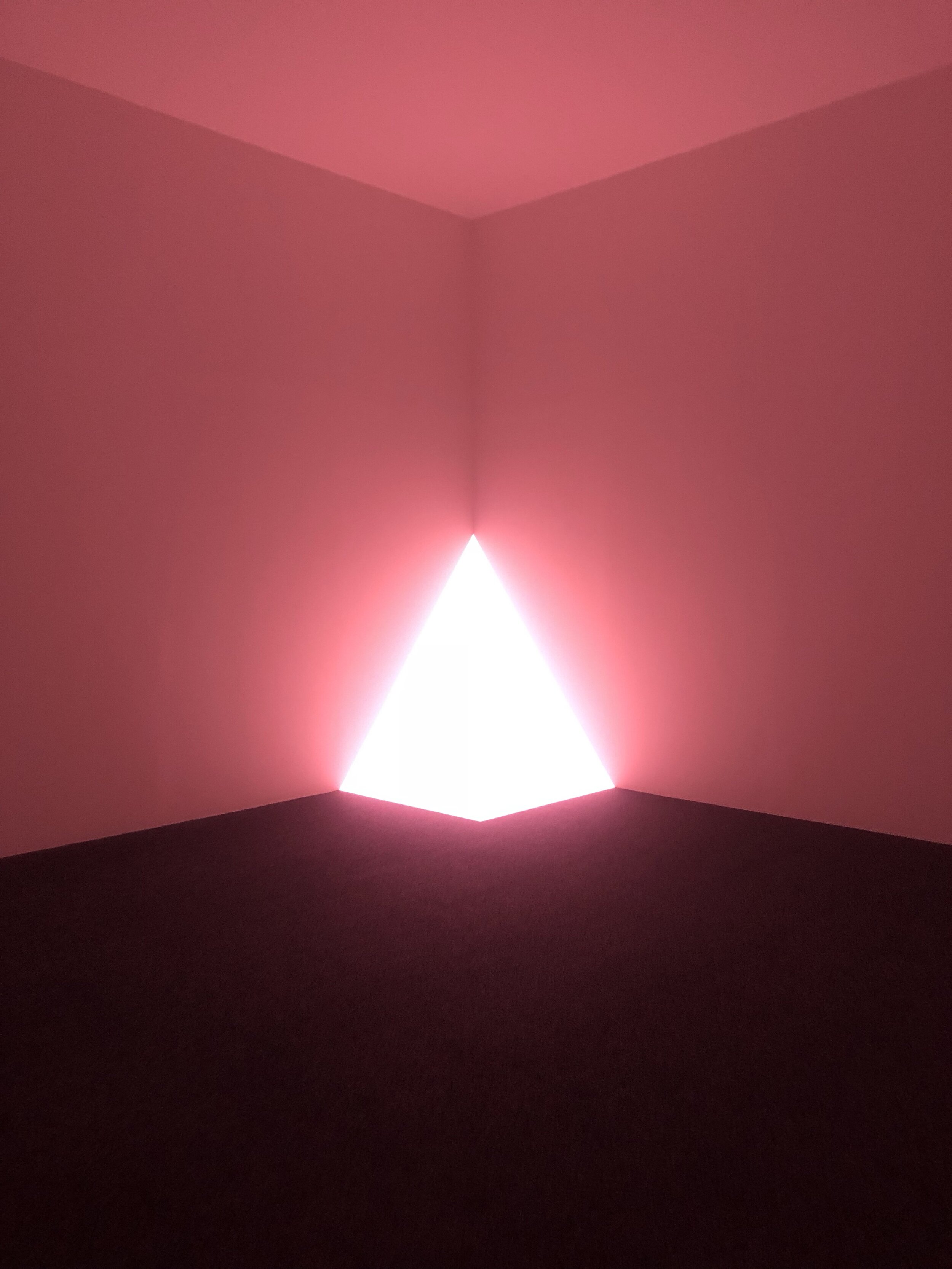



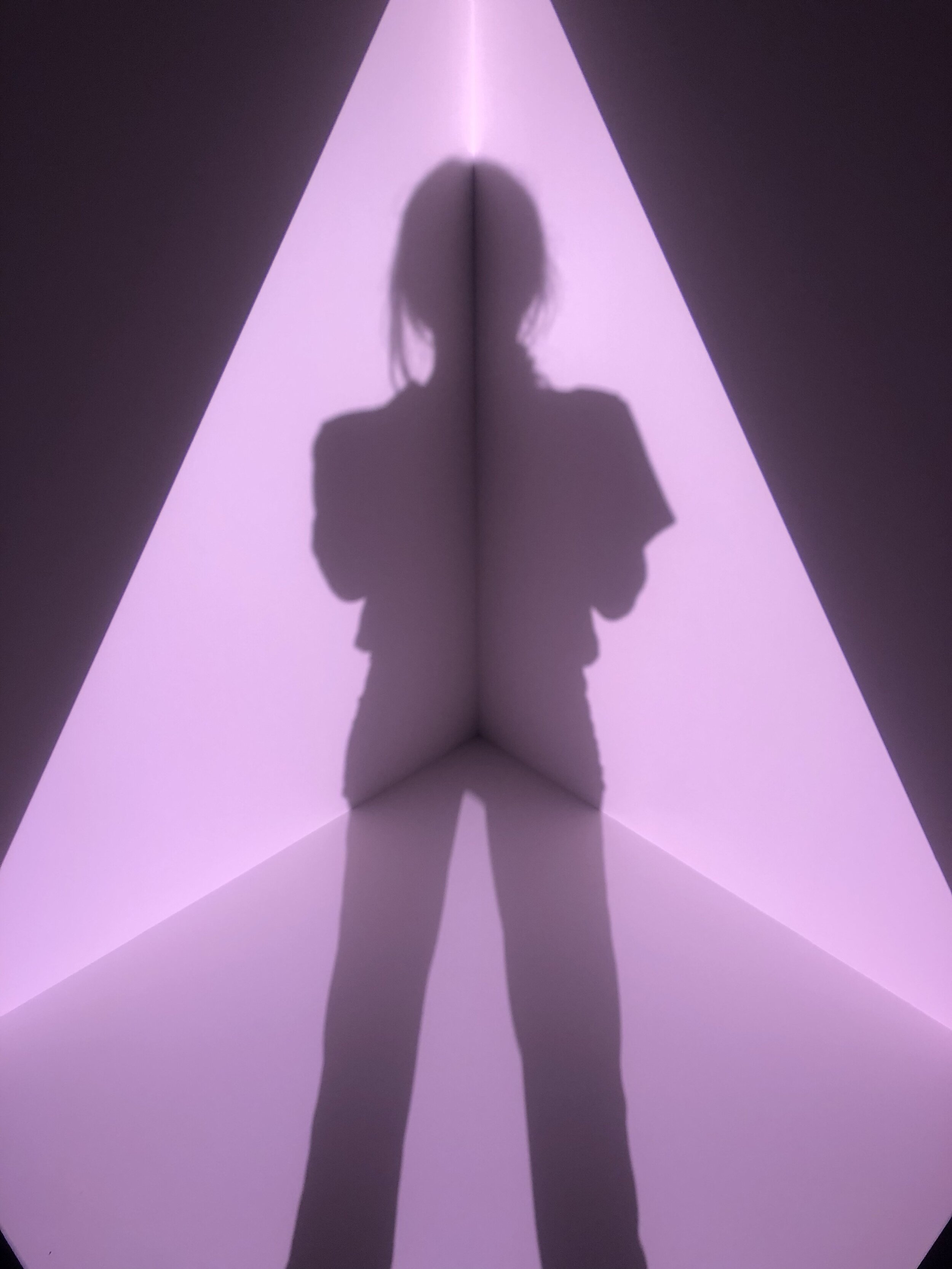


















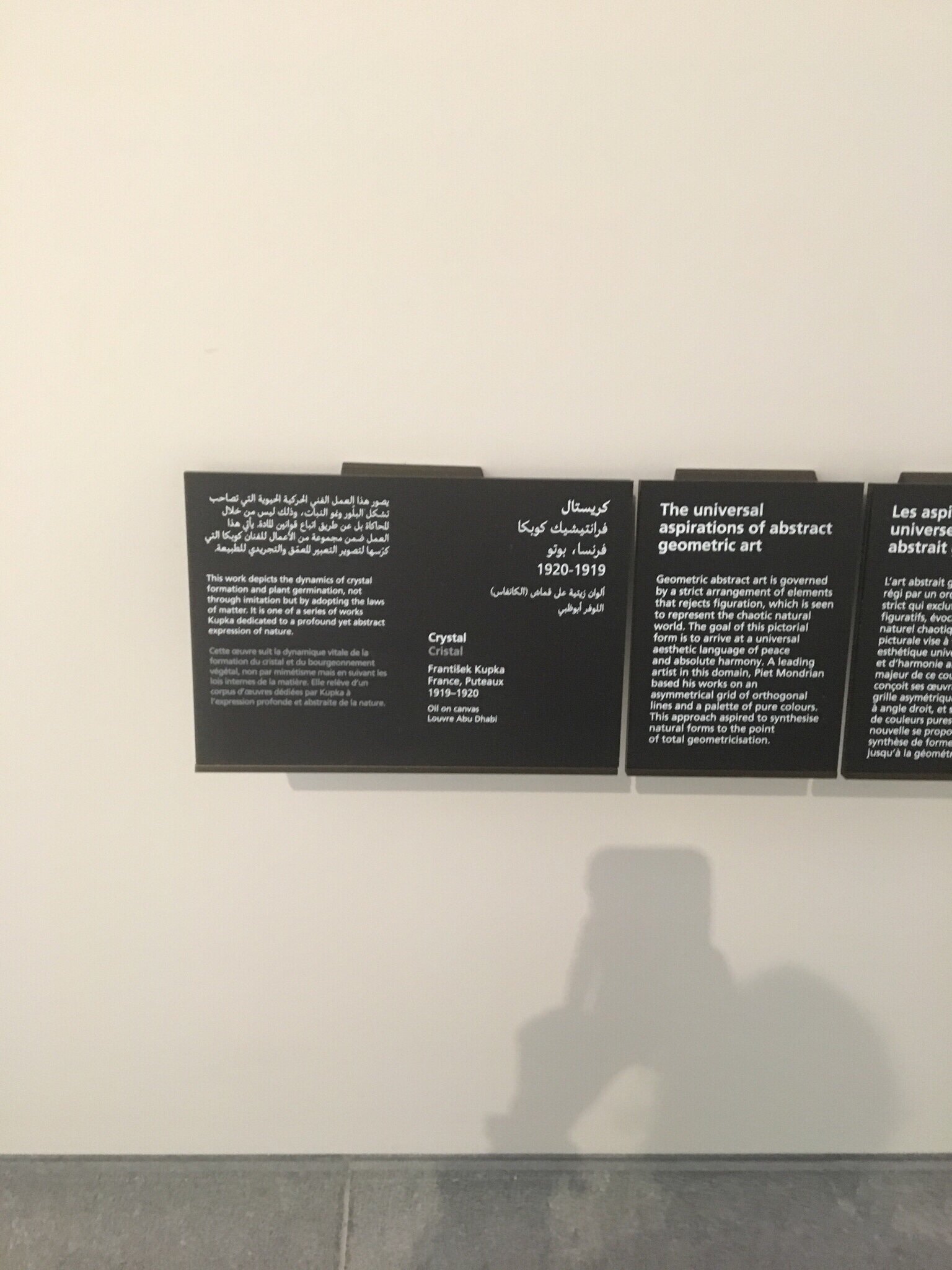













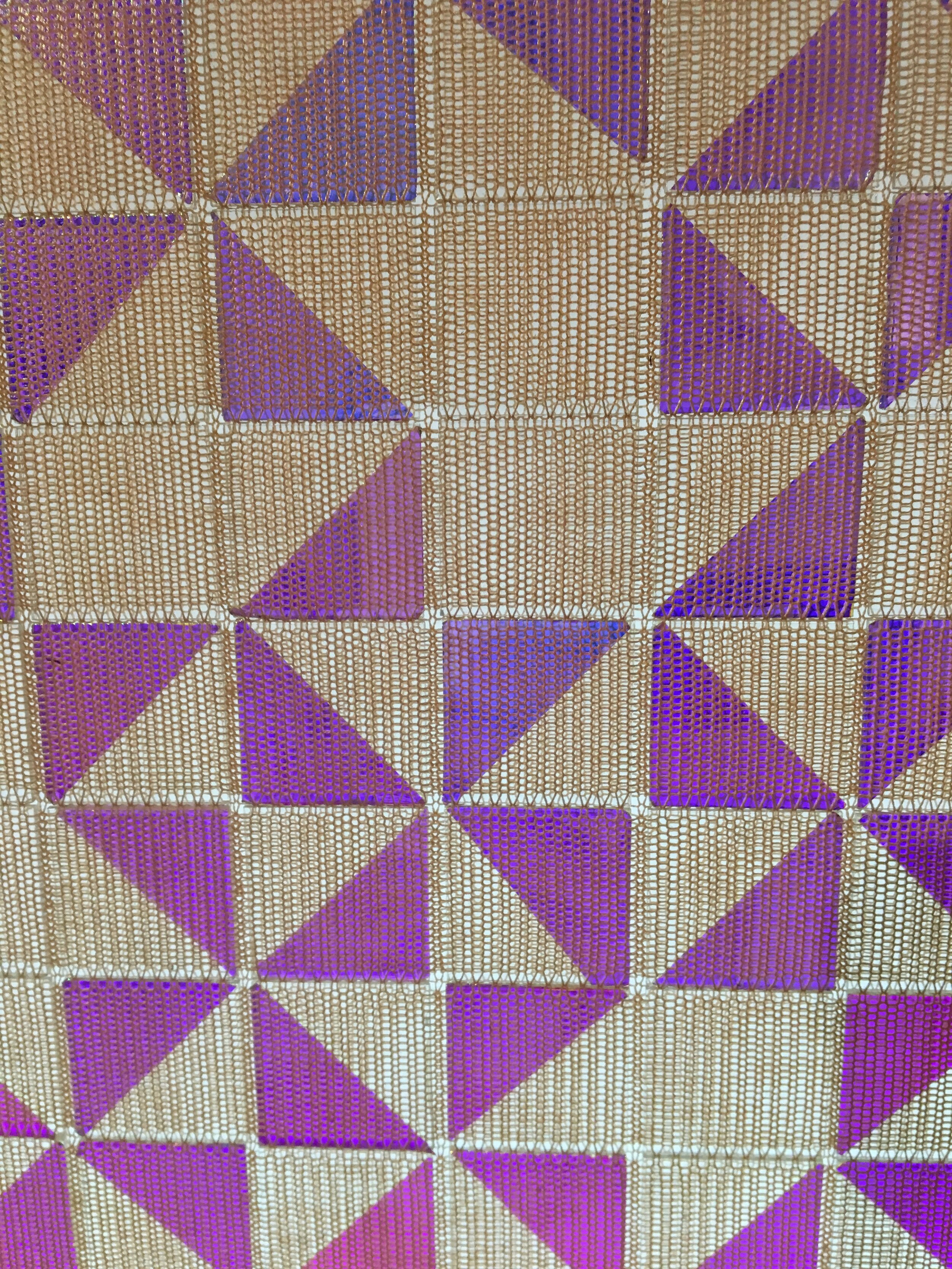
 Most of her work was transparent, luminous or structured in a way to enhance, move or shield light in internal spaces. The repeats were beautiful and called out to be caressed, thankfully something that was not frowned upon in the exhibition.Christine Muller:After the emmense and intense paper printing of Weltformat DXB Muller produced her own works, inspired by the islamic patterns she encountered here in Dubai, on silk flags whose construction was outsourced.
Most of her work was transparent, luminous or structured in a way to enhance, move or shield light in internal spaces. The repeats were beautiful and called out to be caressed, thankfully something that was not frowned upon in the exhibition.Christine Muller:After the emmense and intense paper printing of Weltformat DXB Muller produced her own works, inspired by the islamic patterns she encountered here in Dubai, on silk flags whose construction was outsourced.

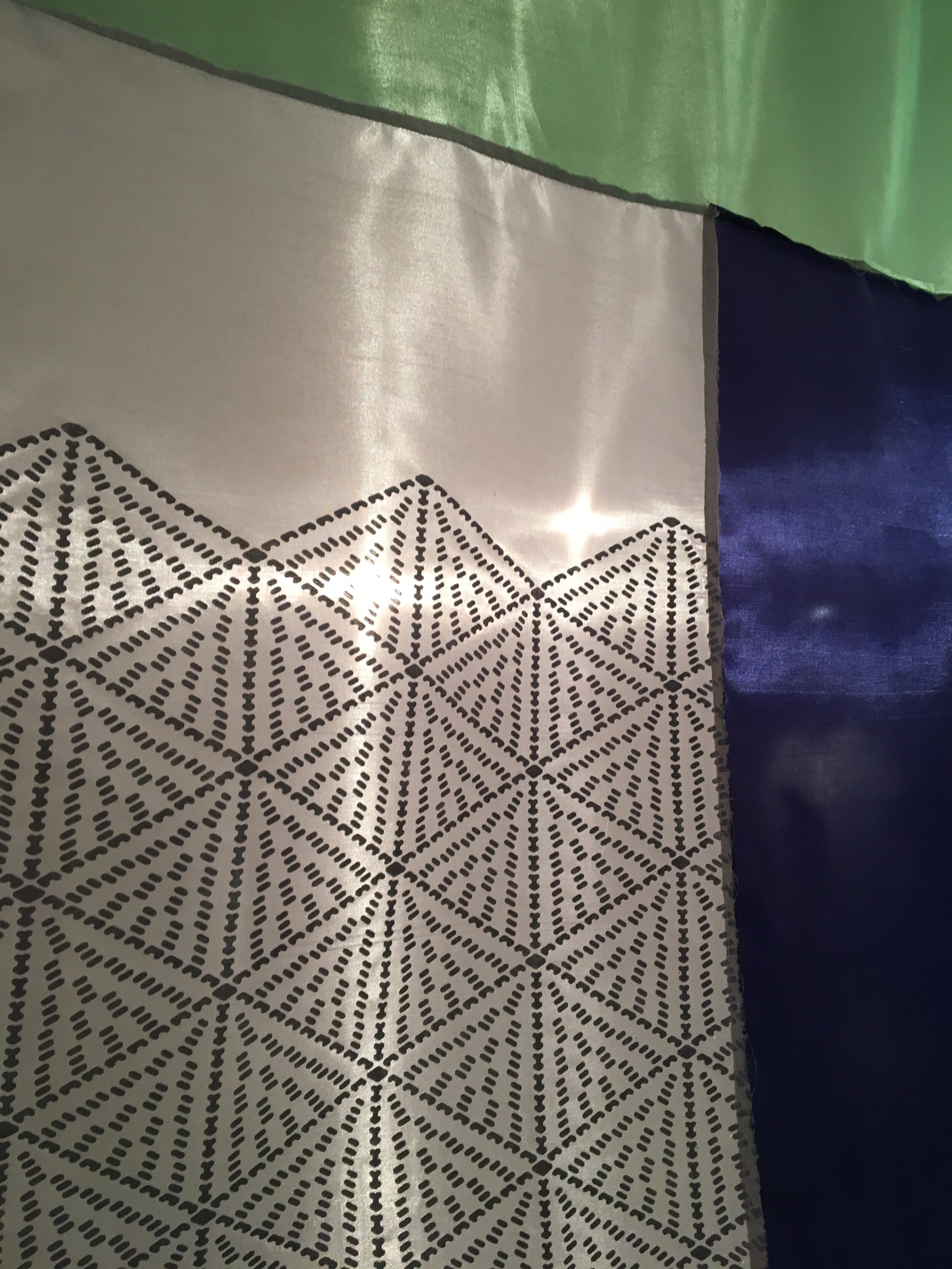
 Most of the pieces had the format of flags local to the Gulf nations, and the use of fine silks gave a luminous subtly to the prints. The audience was encouraged to move through the flags, so that they would float and swirl in the gallery space. The colour palette really felt indicative of the region, the luscious golds, sky blues and rusty sand colours.The exhibition made me question my production or lack thereof. What am I afraid of? What am I trying to stop and why? Why am I restricting my production to small scale pieces? Is it space? of lack of vision?
Most of the pieces had the format of flags local to the Gulf nations, and the use of fine silks gave a luminous subtly to the prints. The audience was encouraged to move through the flags, so that they would float and swirl in the gallery space. The colour palette really felt indicative of the region, the luscious golds, sky blues and rusty sand colours.The exhibition made me question my production or lack thereof. What am I afraid of? What am I trying to stop and why? Why am I restricting my production to small scale pieces? Is it space? of lack of vision? 
























